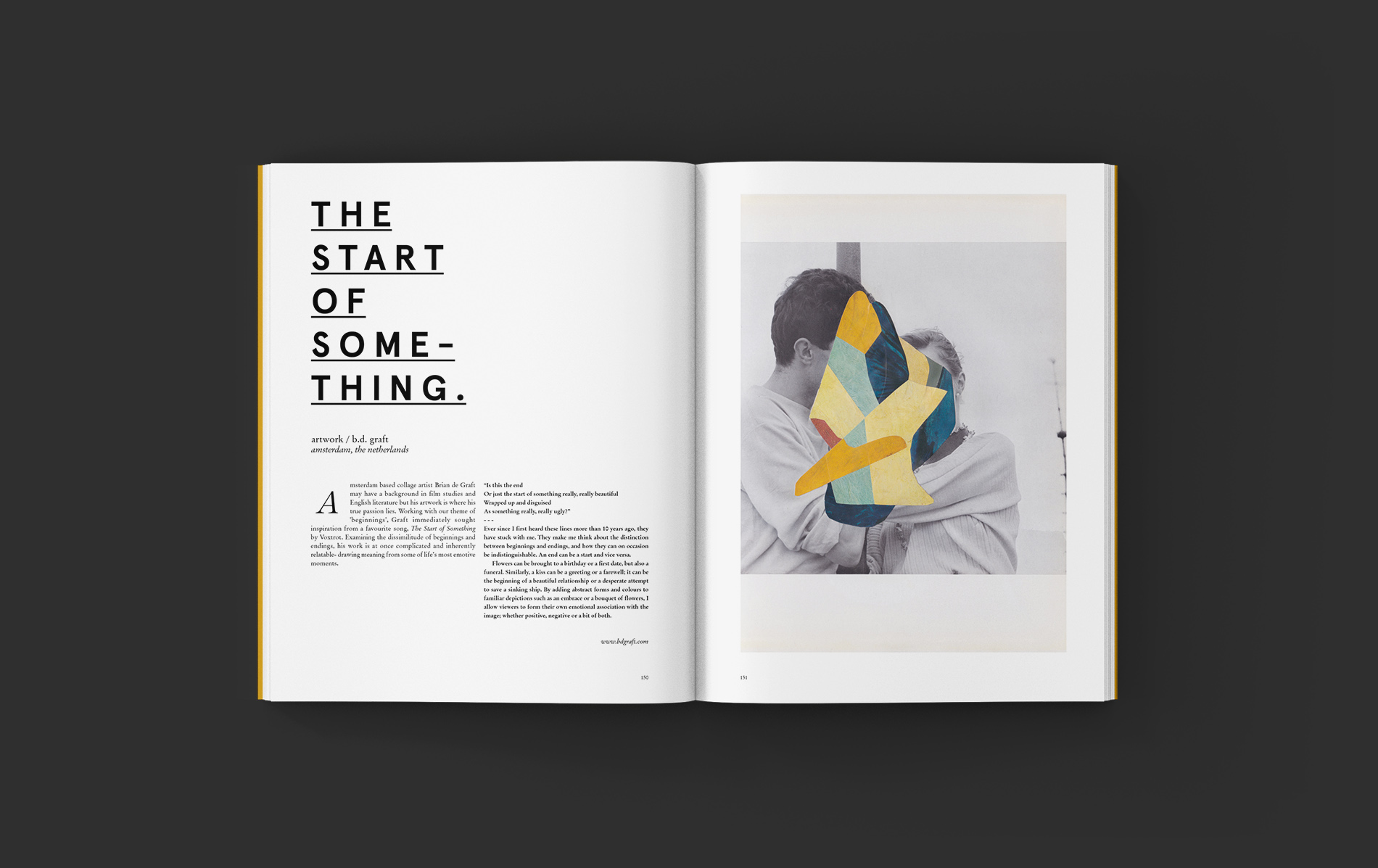Democratizing creativity is a tall order. By employing the concept of ABCD (asset-based community development), the minds behind boom saloon rise to the challenge.
For the launch cover of Beginnings, the first issue of the biannual publication, boom saloon celebrated the work of Denitsa Toshirova, who was still a student at the time of the launch. Like many of their creative endeavours, the fruitful collaboration reflects founder Rachel Arthur’s efforts to showcase fresh, under-the-radar talent. “We work with a broad spectrum of contributors: people who have never been published before; people who feel quite ostracized from the creative industries; people who may feel they don’t have the expected education, they don’t know the right people, they might not have the money. We literally put that all aside and say it does not matter if they have merit,” says Arthur.
boom saloon strives to empower those who lack the right support networks, funding, and educational institutions behind them. “We work with them to nurture their potential and say, you know, this is a genuine thing, this could be a career path for you. You have talent, you just need a little bit of support to take it to the next stage,” Arthur notes. Of course, this democratization requires commitment. Arthur adds that, to her, building such a broad spectrum of contributors is a privilege, getting to use their photography and words with locations and narratives from all over the world. “We really push for the sense of building a community and network,” she says. “It actually really frustrates me when people throw around terms like “community” without meaning, because we speak to every single one of our contributors from all of our issues in an ongoing nature and that will always continue.”

Another main driver is their push for a strong aesthetic alongside stories that might otherwise be slightly overlooked. The stories in the magazine vary from the use of creativity to build reconciliation amidst bitter conflict in Lebanon’s second city, Tripoli to Scotland’s mountain bothies. They are evergreen, touching on topics that remain relevant even after the dust has settled. Cameron Bray, who is part of the architecture collective Civic Soup, wrote about what Kumbharwada, a village in Dharavi, India’s biggest slum, can learn from a 19th century town planner in Edinburgh. “It’s great because it’s not too highbrow. It speaks about really important issues but makes them very accessible to people. If you’re in Edinburgh it has a local sense but then also a global outlook. If you’re not then it’s not too hyperlocal that it wouldn’t be of interest to you,” Arthur says.

“We really love that an image that initially could seem like one thing—a funny, wacky, puppetry type thing—then actually has deeper meanings to it.”
Initially, boom saloon was meant to be a part-time side project that Arthur planned to do at weekends. The mission was simple: To use print to do good and utilize profits from print sales to donate art supplies to areas in need. “This was years ago now,” Arthur begins. “Looking back I was very naive. I wasn’t working in the industry and thought that was good enough.” A speaker at Creative Mornings, a breakfast lecture series, challenged her perception. “It’s no good to look down at problems from an ivory tower and just ruminate on the problem and think that’ll fix it. I mean if you actually want to be involved you have to fully understand what’s going on and see the result within the local community.” Today, the magazine is only one strand, there is also boom projects, an ongoing series of community-led projects, and boom room, a creative studio which feeds into the other two and helps make everything possible financially.



Artist Joao Farkas took over the cover of Perspectives, the magazine’s fourth issue. Compared to its predecessors, it’s boom’s boldest to date. Showcasing a photograph of a vibrant, traditional mask worn during carnival in Brazil against an azure background, it’s not only punchy and utterly unexpected but marks the publication’s evolution. “People make these crazy masks themselves. It’s an incredible series and actually quite disturbing; it can be quite challenging to look at. But we really love that an image that initially could seem like one thing—a funny, wacky, puppetry type thing—then actually has deeper meanings to it,” Arthur explains. In order to not become stagnant, she notes, it’s important for boom to constantly evolve and take new steps; to be brave and bold.
boom saloon Magazine is a biannual magazine based in Edinburgh, Scotland. Striving to use creativity for good, its topics include culture, art, photography, travel, and many more, featuring overlooked destinations and voices by the West.
Find more from our Print Matters series here.
Text: Ann-Christin Schubert

